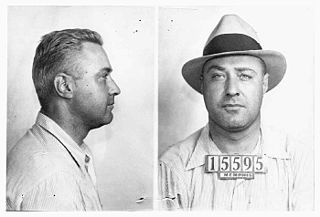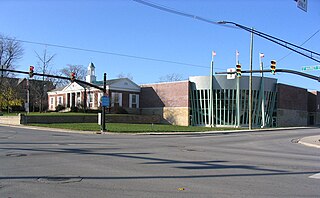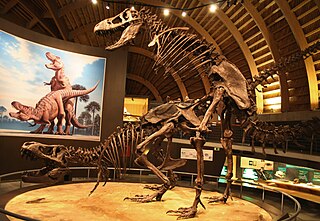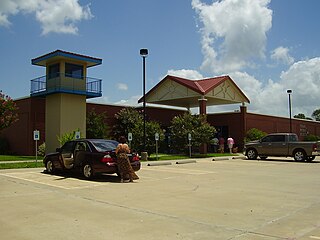
Organized crime is a category of transnational, national, or local group of centralized enterprises run to engage in illegal activity, most commonly for profit. While organized crime is generally thought of as a form of illegal business, some criminal organizations, such as terrorist groups, rebel forces, and separatists, are politically motivated. Many criminal organizations rely on fear or terror to achieve their goals or aims as well as to maintain control within the organization and may adopt tactics commonly used by authoritarian regimes to maintain power. Some forms of organized crime simply exist to cater towards demand of illegal goods in a state or to facilitate trade of goods and services that may have been banned by a state. Sometimes, criminal organizations force people to do business with them, such as when a gang extorts protection money from shopkeepers. Street gangs may often be deemed organized crime groups or, under stricter definitions of organized crime, may become disciplined enough to be considered organized. A criminal organization can also be referred to as an outfit, a gang, crime family, mafia, mob, (crime) ring, or syndicate; the network, subculture, and community of criminals involved in organized crime may be referred to as the underworld or gangland. Sociologists sometimes specifically distinguish a "mafia" as a type of organized crime group that specializes in the supply of extra-legal protection and quasi-law enforcement. Academic studies of the original "Mafia", the Italian Mafia generated an economic study of organized crime groups and exerted great influence on studies of the Russian mafia, the Chinese triads, the Hong Kong triads, and the Japanese yakuza.
A gang is a group or society of associates, friends, or members of a family with a defined leadership and internal organization that identifies with or claims control over territory in a community and engages, either individually or collectively, in illegal, and possibly violent, behavior, with such behavior often constituting a form of organized crime.

A gibbet is any instrument of public execution. Gibbeting is the use of a gallows-type structure from which the dead or dying bodies of criminals were hanged on public display to deter other existing or potential criminals. Occasionally, the gibbet was also used as a method of execution, with the criminal being left to die of exposure, thirst and/or starvation. The practice of placing a criminal on display within a gibbet is also called "hanging in chains".

The Crime Museum is a collection of criminal memorabilia kept at New Scotland Yard, headquarters of the Metropolitan Police Service in London, England. Known as the Black Museum until the early 21st century, the museum came into existence at Scotland Yard sometime in 1874, arising out of the collection of prisoners' property gathered as a result of the Forfeiture Act 1870 and intended as an aid to the police in their study of crime and criminals. Initially unofficial, it had become an official if private museum by 1875, with a police inspector and a police constable assigned to official duty there. Not open to the public, it was used as a teaching collection for police recruits and was only ever accessible by those involved in legal matters, royals and other VIPs.
The Rotary Museum of Police and Corrections is a museum in Prince Albert, Saskatchewan, Canada.

George Kelly Barnes, better known by his nickname "Machine Gun Kelly", was an American gangster from Memphis, Tennessee, active during the Prohibition era. His nickname came from his favorite weapon, a Thompson submachine gun. He is best known for the kidnapping of oil tycoon and businessman Charles F. Urschel in July 1933, from which he and his gang collected a $200,000 ransom. Urschel had collected and left considerable evidence that assisted the subsequent FBI investigation, which eventually led to Kelly's arrest in Memphis on September 26, 1933. His crimes also included bootlegging and armed robbery.

Environmental crime is an illegal act which directly harms the environment. These illegal activities involve the environment, wildlife, biodiversity and natural resources. International bodies such as, G7, Interpol, European Union, United Nations Environment Program, United Nations Interregional Crime and Justice Research Institute, have recognized the following environmental crimes:

The Allen County Museum is located in the city of Lima, the county seat of Allen County, Ohio, United States. Occupying a half city block, the museum campus includes the main museum building, a log house, the MacDonell House, a Shay Locomotive display, the Children's Discovery Center, genealogy and local history library, railroad archives, and the Children's Garden. The museum is accredited by the American Alliance of Museums. According to recent reports of the American Alliance of Museums Accreditation Department, less than 800 museums, out of more than 11,000 in the United States, are accredited. Standards for accreditation apply across the board to both small and large institutions.

Internal Revenue Service, Criminal Investigation (IRS-CI) is the United States federal law enforcement agency responsible for investigating potential criminal violations of the U.S. Internal Revenue Code and related financial crimes, such as money laundering, currency transaction violations, tax-related identity theft fraud and terrorist financing that adversely affect tax administration. While other federal agencies also have investigative jurisdiction for money laundering and some Bank Secrecy Act violations, IRS-CI is the only federal agency that can investigate potential criminal violations of the Internal Revenue Code, in a manner intended to foster confidence in the tax system and deter violations of tax law. Criminal Investigation is a division of the Internal Revenue Service, which in turn is a bureau within the United States Department of the Treasury.
Law enforcement in Albania is the responsibility of several agencies. The responsibility for most tasks lies with the Albanian State Police, a national police agency, which is under the authority of Ministry of Internal Affairs. Examples of other agencies with limited policing powers are the Municipal Police, which has administrative functions and operates in the local level. They are controlled by mayors.
The Chicago Crime Commission is an independent, non-partisan civic watchdog organization of business leaders dedicated to educating the public about the dangers of organized criminal activity, especially organized crime, street gangs and the tools of their trade: drugs, guns, public corruption, money laundering, identity theft and gambling, founded in 1919. The police, the judicial system, politicians, prosecutors and citizens rely on the Chicago Crime Commission to provide advice on crime issues and to communicate vital information to the public.

The Behavioral Science Unit (BSU) is the original name of a unit within the Federal Bureau of Investigation's (FBI) Training Division at Quantico, Virginia, formed in response to the rise of sexual assault and homicide in the 1970s. The unit was usurped by the Critical Incident Response Group (CIRG) and renamed the Behavioral Research and Instruction Unit (BRIU) and currently is called the Behavioral Analysis Unit (5) (BAU-5) within the National Center for Analysis of Violent Crime (NCAVC). The BAU-5 currently works on developing research and then using the evidence-based results to provide training and improve consultation in the behavioral sciences—understanding who criminals are, how they think, why they do what they do—for the FBI and law enforcement communities.
The National Museum of Crime and Punishment, also known as the Crime Museum, was a privately owned museum dedicated to the history of criminology and penology in the United States. It was located in the Penn Quarter neighborhood of Washington, D.C., half a block south of the Gallery Place station. The museum closed in 2015 and is now operated as Alcatraz East, a museum in Pigeon Forge, Tennessee.
A serial rapist is someone who commits multiple rapes, whether with multiple victims or a single victim repeatedly over a period of time. Some serial rapists target children. The terms sexual predator, repeat rape and multiple offending can also be used to describe the activities of those who commit a number of consecutive rapes, but remain unprosecuted when self-reported in research. Others will commit their assaults in prisons. In some instances, a group of serial rapists will work together. These rapists can have a pattern of behavior that is sometimes used to predict their activities and aid in their arrest and conviction. Serial rapists also differ from one time offenders because "serial rapists more often involved kidnapping, verbally and physically threatening the victims, and using or threatening the use of weapons."

Exhibit design is the process of developing an exhibit—from a concept through to a physical, three-dimensional exhibition. It is a continually evolving field, drawing on innovative, creative, and practical solutions to the challenge of developing communicative environments that 'tell a story' in a three-dimensional space.

The Mob Museum, officially the National Museum of Organized Crime and Law Enforcement, is a history museum located in Downtown Las Vegas, Nevada, United States.

The National Law Enforcement Museum is a museum located in Washington, D.C. It opened on October 13, 2018, and covers American law enforcement through interactive exhibits, historical and contemporary artifact collections, with a dedicated space for research and educational programming. It is a mostly-underground facility located adjacent to the National Law Enforcement Officers Memorial in Washington, D.C.'s Judiciary Square near several district and federal courthouses.

The Texas Prison Museum is located in Huntsville, Texas.

The Johnny Cash Museum opened in May 2013 in Nashville, Tennessee, to honor the life and music of the country superstar often referred to as the "Man in Black." It houses the world's largest collection of Johnny Cash memorabilia and artifacts, including a stone wall taken from his lake house in Hendersonville, Tennessee, and is officially authorized by Cash's estate.

Tamil Nadu Police Museum is a museum in Chennai, India. Located in Pantheon Road in the neighbourhood of Egmore, the museum was opened in September 2021. The museum has a repository of exhibits marking the passage of the state's law enforcement agency from colonial India to the modern day.















